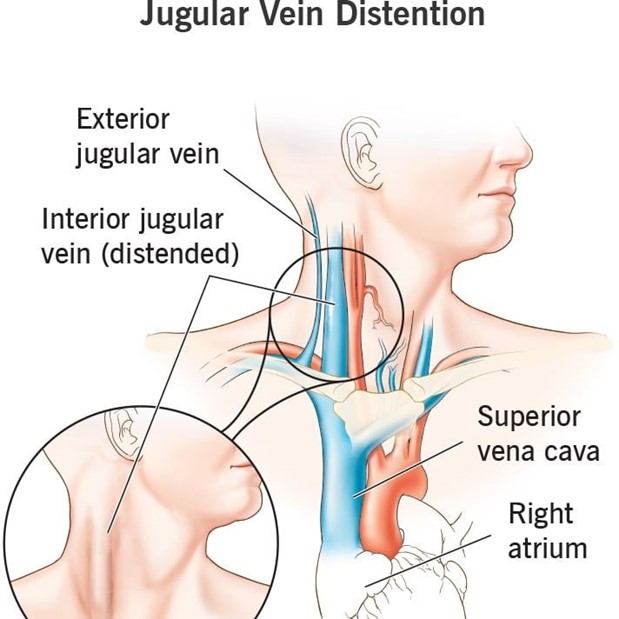A nurse is caring for a patient whose sodium level is 118 mEq/L. Which nursing diagnosis is a priority for this patient?
Comfort, Impaired
Disturbed Sensory Perception
Deficient Fluid Volume
Risk for Injury
The Correct Answer is B
Choice A: Comfort, Impaired is not a priority nursing diagnosis for this patient, because this condition is not directly related to the low sodium level. Comfort, Impaired is a state of physical or psychological discomfort that can affect the patient's well-being and quality of life.
Choice B: Disturbed Sensory Perception is a priority nursing diagnosis for this patient, because this condition is a serious complication of the low sodium level. Disturbed Sensory Perception is a state of altered or impaired perception of reality that can affect the patient's cognitive and neurological functions. Low sodium level can cause cerebral edema, which is a swelling of the brain that can lead to confusion, seizures, coma, and death.
Choice C: Deficient Fluid Volume is not a priority nursing diagnosis for this patient, because this condition is not the cause of the low sodium level. Deficient Fluid Volume is a state of decreased intravascular, interstitial, or intracellular fluid that can affect the patient's fluid and electrolyte balance. Low sodium level can be caused by excess fluid intake, fluid retention, or loss of sodium from the body.
Choice D: Risk for Injury is not a priority nursing diagnosis for this patient, because this condition is not specific to the low sodium level. Risk for Injury is a state of vulnerability to physical or psychological harm that can affect the patient's safety and health. Low sodium level can increase the risk of injury from falls, accidents, or seizures.
Nursing Test Bank
Naxlex Comprehensive Predictor Exams
Related Questions
Correct Answer is B
Explanation
Choice A: Concentrated hemoglobin and hematocrit levels are not a sign of fluid volume overload, but rather of fluid volume deficit. This is a condition that occurs when the body loses more fluid than it gains. This can happen in patients who have excessive bleeding, vomiting, diarrhea, or diaphoresis. Concentrated hemoglobin and hematocrit levels indicate hemoconcentration, which is an increase in the ratio of blood cells to plasma.
Choice B: Distended neck veins are a sign of fluid volume overload, because this condition occurs when the body retains more fluid than it excretes. This can happen in patients who have heart failure, kidney failure, or excessive fluid intake. Distended neck veins indicate increased central venous pressure, which is a measure of the pressure in the right atrium of the heart.
Choice C: Decreased urine output is not a sign of fluid volume overload, but rather of oliguria or anuria. These are conditions that occur when the urine output is less than 400 mL or 50 mL per day, respectively. These can happen in patients who have acute or chronic kidney injury, urinary obstruction, or shock. Decreased urine output indicates impaired renal function and decreased glomerular filtration rate.
Choice D: Poor skin turgor is not a sign of fluid volume overload, but rather of dehydration. This is a condition that occurs when the body loses more water than it gains. This can happen in patients who have fever, diabetes insipidus, or hyperglycemia. Poor skin turgor indicates decreased skin elasticity and delayed return to normal shape after being pinched.

Correct Answer is B
Explanation
Choice A: Comfort, Impaired is not a priority nursing diagnosis for this patient, because this condition is not directly related to the low sodium level. Comfort, Impaired is a state of physical or psychological discomfort that can affect the patient's well-being and quality of life.
Choice B: Disturbed Sensory Perception is a priority nursing diagnosis for this patient, because this condition is a serious complication of the low sodium level. Disturbed Sensory Perception is a state of altered or impaired perception of reality that can affect the patient's cognitive and neurological functions. Low sodium level can cause cerebral edema, which is a swelling of the brain that can lead to confusion, seizures, coma, and death.
Choice C: Deficient Fluid Volume is not a priority nursing diagnosis for this patient, because this condition is not the cause of the low sodium level. Deficient Fluid Volume is a state of decreased intravascular, interstitial, or intracellular fluid that can affect the patient's fluid and electrolyte balance. Low sodium level can be caused by excess fluid intake, fluid retention, or loss of sodium from the body.
Choice D: Risk for Injury is not a priority nursing diagnosis for this patient, because this condition is not specific to the low sodium level. Risk for Injury is a state of vulnerability to physical or psychological harm that can affect the patient's safety and health. Low sodium level can increase the risk of injury from falls, accidents, or seizures.
Whether you are a student looking to ace your exams or a practicing nurse seeking to enhance your expertise , our nursing education contents will empower you with the confidence and competence to make a difference in the lives of patients and become a respected leader in the healthcare field.
Visit Naxlex, invest in your future and unlock endless possibilities with our unparalleled nursing education contents today
Report Wrong Answer on the Current Question
Do you disagree with the answer? If yes, what is your expected answer? Explain.
Kindly be descriptive with the issue you are facing.
